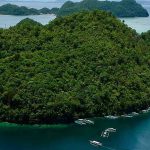This story originally appeared on Travelandleisure.com.
Living in Los Angeles, I don’t crave beaches and palms in winter. Rogue 90-degree days in January make me long to scrape ice off a windshield, or at least wear a sweater. So in March, I flew into snow-blanketed Anchorage and caught the Alaska Railroad’s natty blue-and-yellow Aurora Winter Train to Fairbanks. As we chugged out of the city, the windows filled with trees and snow, an occasional moose, and, around every turn, Denali, getting steadily larger. At 20,310 feet, it’s the highest mountain in North America, but that number doesn’t express how gigantic it is, how ridiculously far away you can be and still think, Wow, big. I’m told the peak is often hidden in clouds, but under blue skies, my experience was of something impossible to miss but constantly pointed out. “There’s Denali,” said everyone in Anchorage. “There’s Denali,” said everyone on the train. “There it is, all right,” I agreed. It seemed so close—but I was about to get much closer.

It’s difficult to convey the awesomeness of the Sheldon Chalet, a new lodge that sits right on Denali’s shoulder and is accessible only by helicopter. But the bare facts are these: in the 1950s, a bush pilot named Don Sheldon homesteaded five acres inside what would later become Denali National Park and Preserve, including a 300-foot-high granite outcropping sticking out of a glacier. Atop it, he built a hut that, by virtue of its location, was only practical for use by experienced mountaineers.
Sheldon died in 1975, but last year, two of his children built a hexagonally shaped, heavily engineered, highly improbable five-bedroom piece of heaven, from which guests can trek over glaciers, go heli-hiking, and glimpse the aurora borealis. Flying in, I watched from the helicopter’s bubble-like cockpit as leafless birch forest gave way to cracked superhighways of ice snaking through a maze of upthrust slabs, sawtooth ridges, and looming monoliths. “There’s Denali,” the pilot said.

The chalet appeared ludicrously small, dwarfed by its surroundings, a toy house perched on a miniature rock. After we landed, I was led inside and welcomed with champagne and oysters and other nibbles that refocused my brain on the most important thing—me.
Herein lies the particular, vertigo-inducing magic of the Sheldon Chalet: contrast. The lodge fortifies you with cozy comforts. There’s a warm stove, snuggly faux-fur blankets, slippers in your size, even artful little pillow chocolates. But step outside and there is only austerity and silence, a landscape produced by eons of uplifting rock and compressing ice, a place so profoundly unable to know or care about your existence that in its presence you feel both afraid and euphoric. You are so small, and your life is so brief and insignificant, but isn’t that kind of freeing? The experience forces you to be in the present, free of petty concerns like Instagramming or sending gloating texts. Plus, there’s no Wi-Fi.

The Chalet is only the most rarefied example of an Alaskan trend toward remote, small-scale accommodation. The new Borealis Basecamp, 25 miles north of Fairbanks and fully off-grid, is a lunar colony of dome-shaped white cabins. Each has a panoramic window angled to facilitate viewing the northern lights from — wait for it — bed. Aurora tourism is notoriously tricky; not only do you need to be in the right place at the right time, you need a clear, dark sky. Fairbanks is in the right latitude (check) and has little ambient light and low precipitation (check, check), but you still have to cross your fingers.

My first night, around 10, a pale band appeared in the sky. The wind kicked up; the temperature dropped into the single digits. I got out of bed and hustled into my many layers. I needed to be under the sky, the whole thing.
Pale green light swirled up like peacock plumes. Glittering bridges spanned the horizon. Here it was again — the exhilarating indifference of the natural world. The aurora, this impossibly beautiful thing, holds no intention, carries no purpose, needs no observer. It’s chemistry. On this particular night, charged particles had traveled more than 90 million miles through space on the solar wind, and reacted with gases in the atmosphere when I happened to be looking up. Ninety million miles.

“Big country,” people say about Alaska, but everything’s relative.
Alaska Trip Planner
If you want to see both the Sheldon Chalet (from $2,300 per person per night) and Borealis Basecamp (doubles from $389) and take the train, it’s best to fly into Fairbanks. The Aurora Winter Train runs December to March, with weekend-only service in fall and spring. Most passengers do the whole trip in one 12-hour, 356-mile shot, but the town of Talkeetna is worth a stop, especially for outdoor activities like mushing or snowmobiling. On Main Street, visit the Denali Brewing Co. for microbrews, Conscious Coffee for a shot of caffeine, and the Roadhouse for colossal cinnamon rolls. The Sheldon Chalet arranges transfers in both Talkeetna and Anchorage, so you can skip Talkeetna or the last leg of the railway, or fly into Anchorage if you only want to stay at the chalet.











